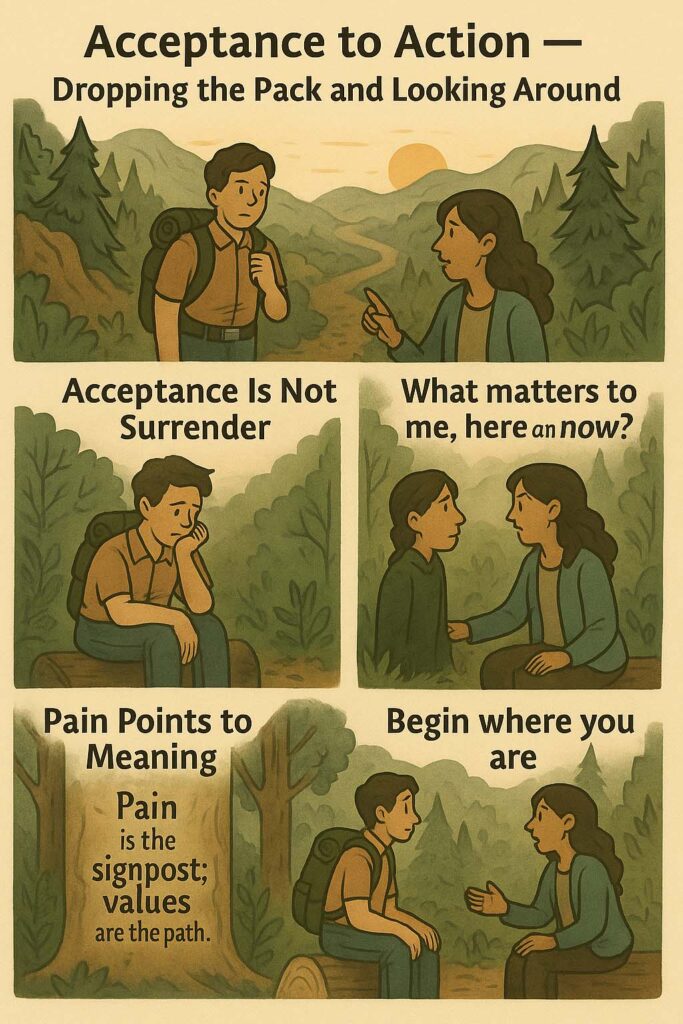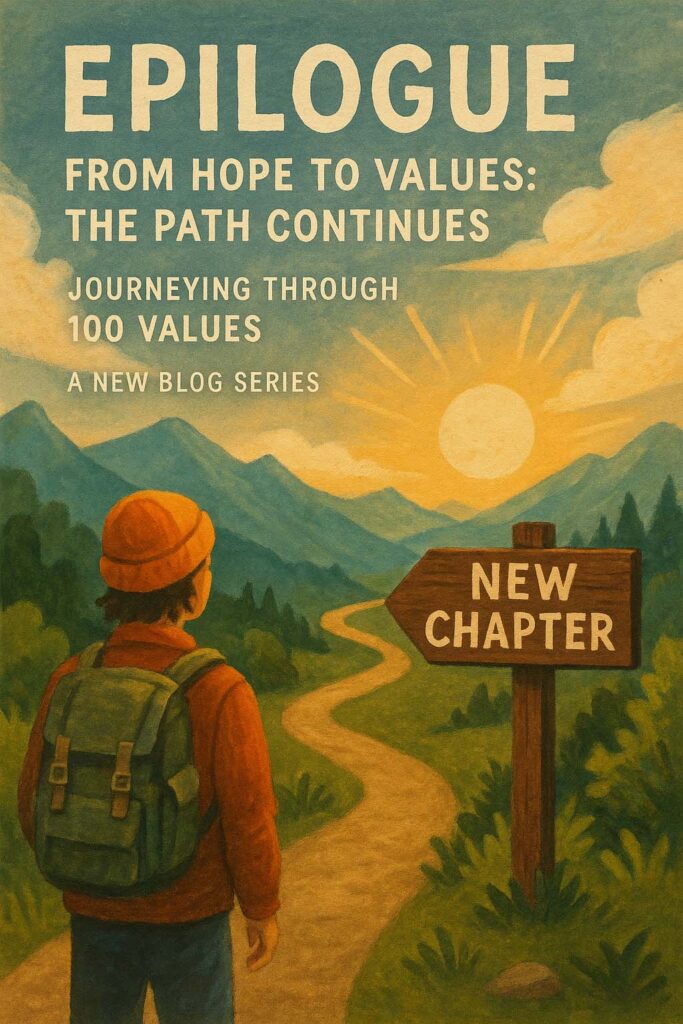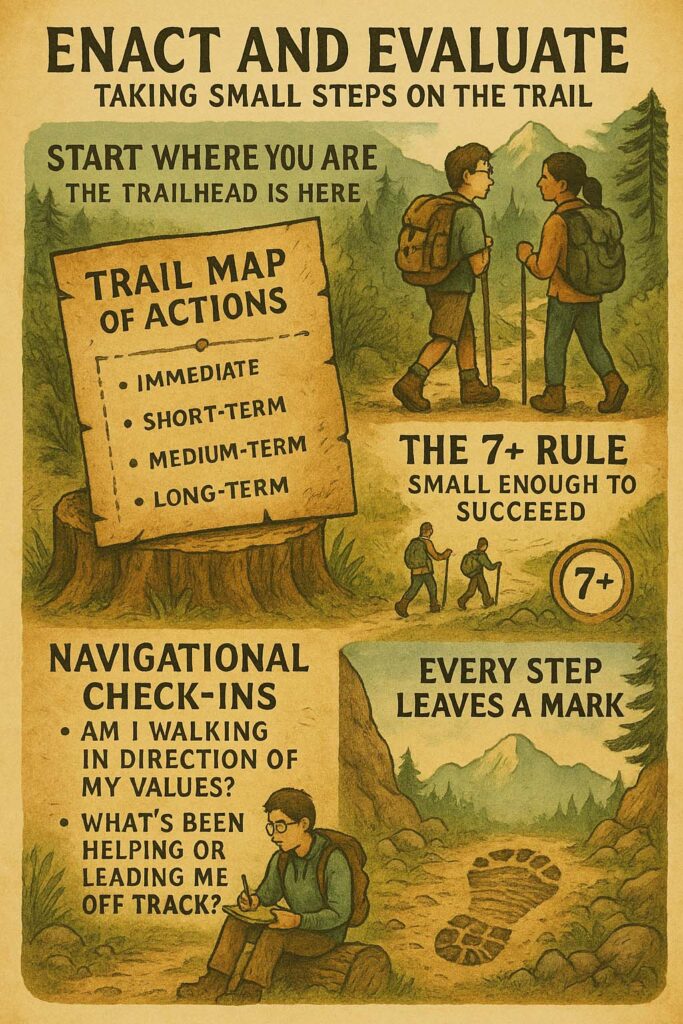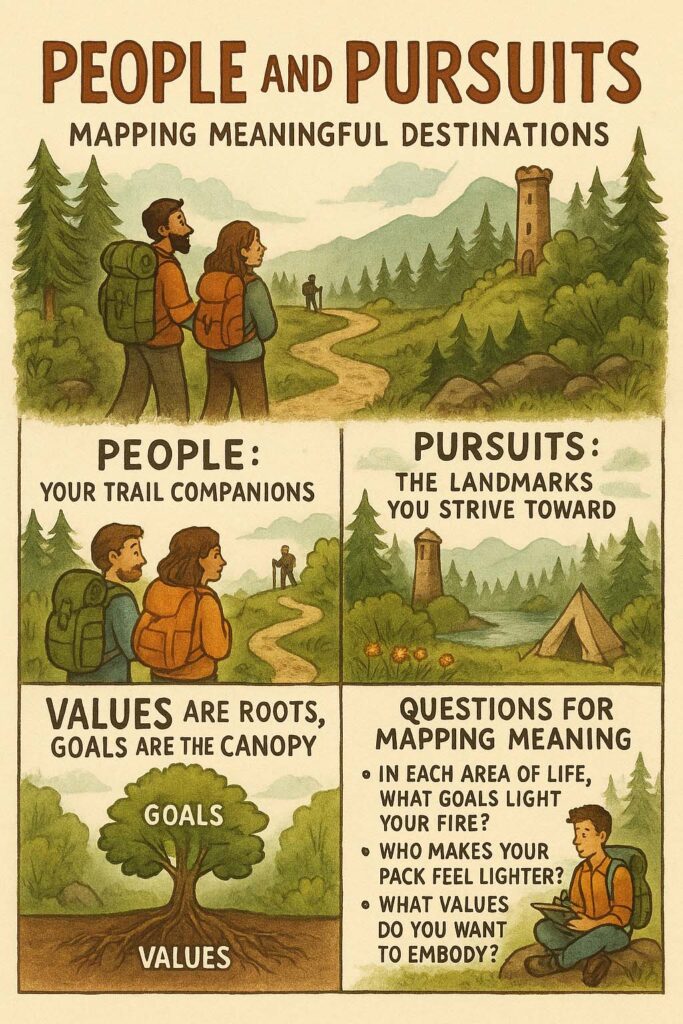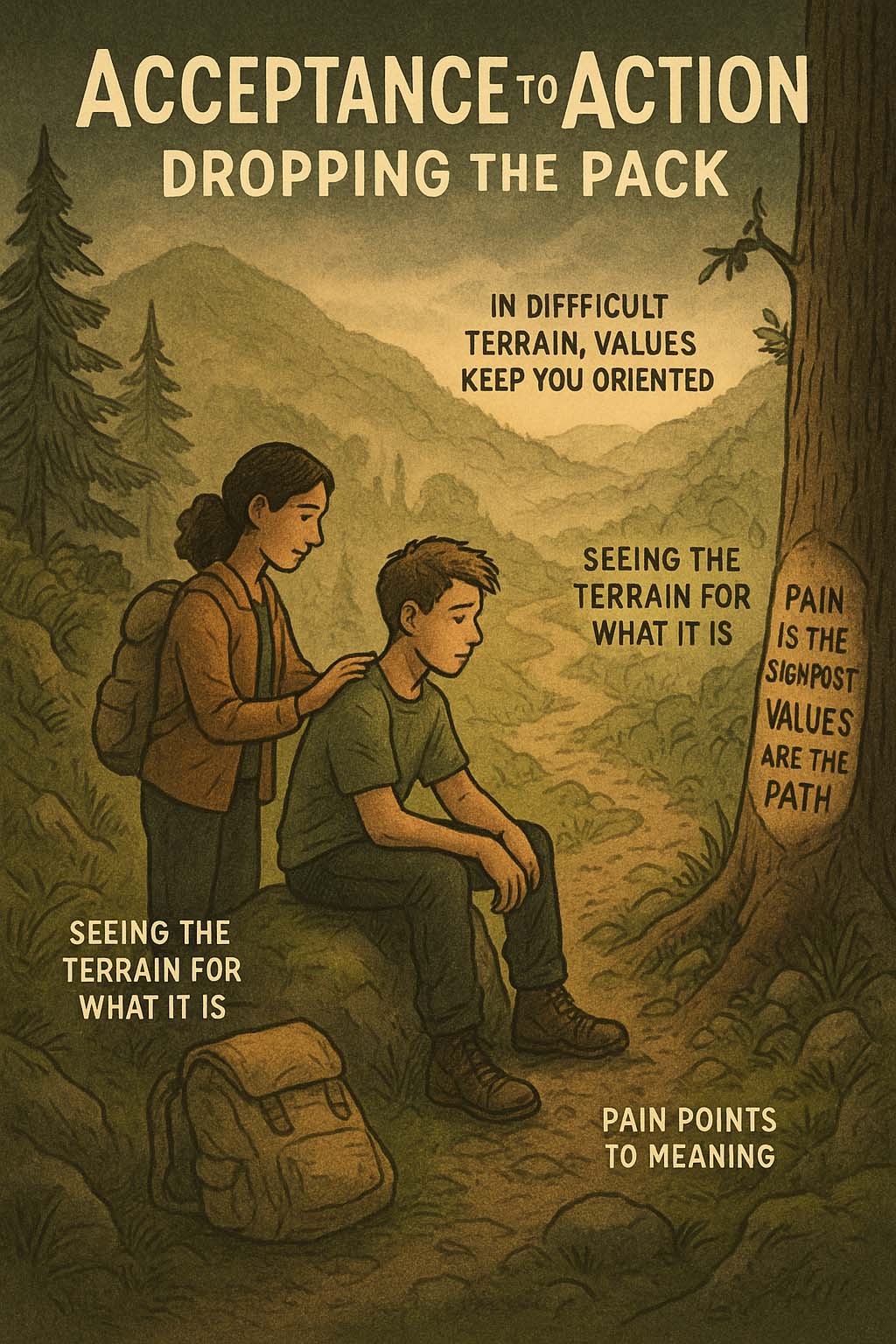
🌲 Acceptance to Action
Imagine Alex standing at the edge of a rugged trail. Behind him, the ground is uneven and steep—memories, mistakes, and tangled thoughts still clinging like burrs to his backpack. Ahead, the path winds into misty hills, half-covered by vines of uncertainty and self-doubt. His breath is shallow. The forest feels too thick. The trail feels too much.
Maya, his ADHD Life Guide, walks beside him. She doesn’t offer a shortcut. She doesn’t carry his pack. Instead, she gently places her hand on his shoulder and says, “Let’s just stop for a moment. Let’s take this in.”
This is the first step in the HOPE framework: Acceptance to Action. Before we move forward, we need to drop our pack, look around, and acknowledge where we are—even if the landscape feels harsh or unfamiliar. Acceptance doesn’t mean giving up on the trail; it means admitting we’re on it.
🌿 Acceptance Is Not Surrender
When the terrain gets rough—when routines break down, motivation disappears, or shame floods in—our first instinct is often resistance. We tell ourselves, “This shouldn’t be this hard,” or “What’s wrong with me?” These thoughts are like brambles on the trail, wrapping around our ankles and pulling us into emotional quicksand.
But Maya teaches Alex a different question:
“What matters to me, here and now?”
Instead of asking, “What’s the matter with me?”—which fuels the inner critic—Alex learns to ask what the struggle reveals about what he values. If he’s overwhelmed by missing a deadline, maybe it’s because he cares about doing things well. If he feels ashamed after zoning out in class, maybe it’s because he deeply values learning. Pain often grows in places where something meaningful is at stake.
🥾 Seeing the Terrain for What It Is
Acceptance is the act of seeing clearly—not through fogged-up fear goggles, but with eyes wide open. Maya helps Alex name what’s really going on: “This hill is steep. You’re tired. And it makes sense that this feels hard.” They stop trying to bulldoze the trail, and instead start to observe it—marking where it narrows, where it softens, where it opens up.
This doesn’t mean we like the terrain or agree with it. It means we acknowledge it as real. The thoughts, feelings, and memories that seem like monsters in the forest lose power when we stop running from them. Alex learns to sit on a mossy rock, breathe, and let the feelings rise like mountain fog—present, but not permanent.
🌌 Pain Points to Meaning
Maya shows Alex a new way to read pain: not as a flaw, but as a signal. She calls these “trail flares.” If the trail of disappointment lights up, it might be because something or someone matters deeply. Pain doesn’t mean we’re broken—it means we’re alive, aware, and connected.
She points to a carving in a nearby tree:
“Pain is the signpost; values are the path.”
When Alex feels that knot in his chest, he pauses. He names it. He gets curious. And in that moment, he finds something surprising—not defeat, but direction.
🌄 Begin Where You Are
Fighting the trail doesn’t make it disappear. Telling yourself it should be flat and easy doesn’t make the hills any less steep. But when Alex begins to accept the terrain, he starts to regain his footing. It’s like tightening his shoelaces and adjusting his backpack before continuing the climb.
Acceptance doesn’t fix everything. But it clears the path. It brings “more light, less heat.” It allows us to focus not on changing the landscape, but on choosing how we walk it.
🪵 A Grounding Log for Reflection
Before Alex and Maya take their next step, they sit by a fallen log and reflect:
- When have I felt stuck, lost, or weighed down on this trail?
- What was I fighting that I could have acknowledged?
- What matters most to me in this moment of struggle?
These questions aren’t meant to fix or judge. They’re meant to dignify the struggle—to say, “You’re here. It’s hard. And your next step can still be values-guided.”
🧭 Into the HOPE Trail
With acceptance as their starting place, Alex and Maya are ready to begin the four-step HOPE journey:
- Helps / Harms – Clear the path by asking the magic question: “Does this help or harm?”
- Own My Values – Set your compass by naming what matters most.
- People and Pursuits – Choose your trailmates and meaningful destinations.
- Enact and Evaluate – Take small steps, reflect often, and course-correct with compassion.
The terrain ahead is still unpredictable. But with his pack adjusted, his breath steady, and Maya walking beside him, Alex is no longer lost—he’s learning how to walk.
